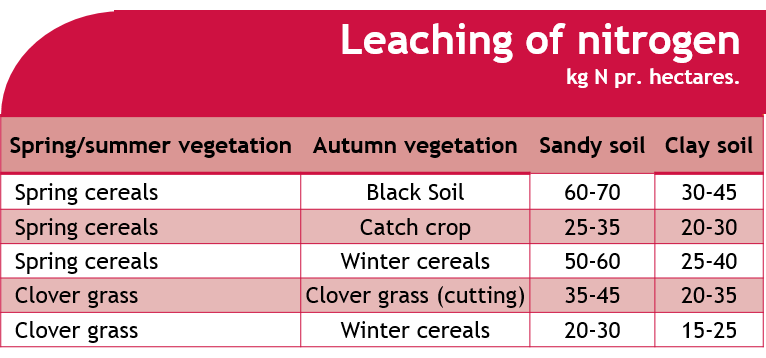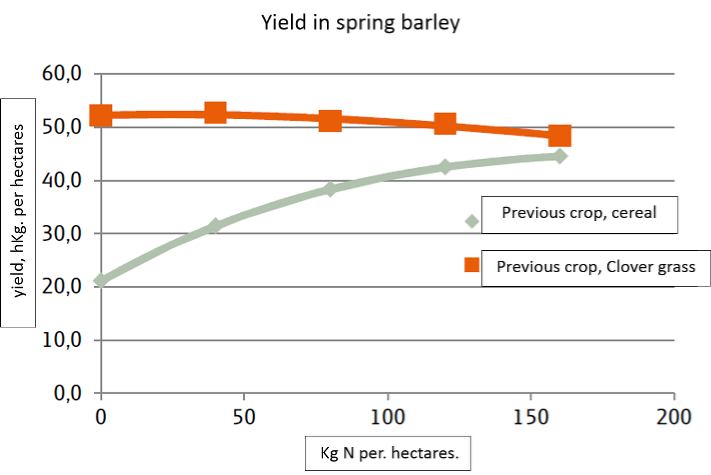Cut your fertiliser costs with grass and clover grass
Grass and clover grass give you options for cutting your fertiliser use and for reducing nitrogen leaching. That could mean a huge saving on costs.
Nitrogen fertiliser is expensive, often amounting to a significant share of your gross farm income. If some of that nitrogen subsequently leaches from your fields, your farm is effectively leaching money. Preventing leaching by planting grass or clover grass improves farm profitability and protects your surrounding environment.
Clover grass reduces leaching by up to 71%
Clover grass is a great way to reduce leaching and maintain crop yields. The grass element of the mixture reduces leaching by up to 71% in sandy soils and up to 33% in clay soils.
Grass is also effective on its own when grown as a catch crop. Growing grass absorbs nitrogen from the soil. Later, when the grass decomposes, it releases the nitrogen for use by a following crop.
The table below shows how clover grass reduces leaching in a variety of planting schemes.

Nitrogen fixation for higher yields
A big factor driving research into nitrogen use has been the need to maintain yields. Clover grass does this. It doesn't just counteract leaching, the clover element also fixes nitrogen directly from the air, reducing your need for commercial fertilisers.
The ability of clover grass to fix nitrogen is good for any following crop. Research shows that the yield from a crop of spring barley is far higher when the previous crop was clover grass than it would be if the previous crop was a cereal.
To raise the yield of the post-cereal crop of spring barley to a similar level, you would have to add as much as 150kgN/h. Compare this to the post-clover grass crop which produces a high yield with or without additional nitrogen.

To find out how you can cut your fertiliser costs by growing clover grass, speak to your local DLF supplier.
Or visit our website to read about seed mixtures that put nitrogen into your fields and protein into your herds.
